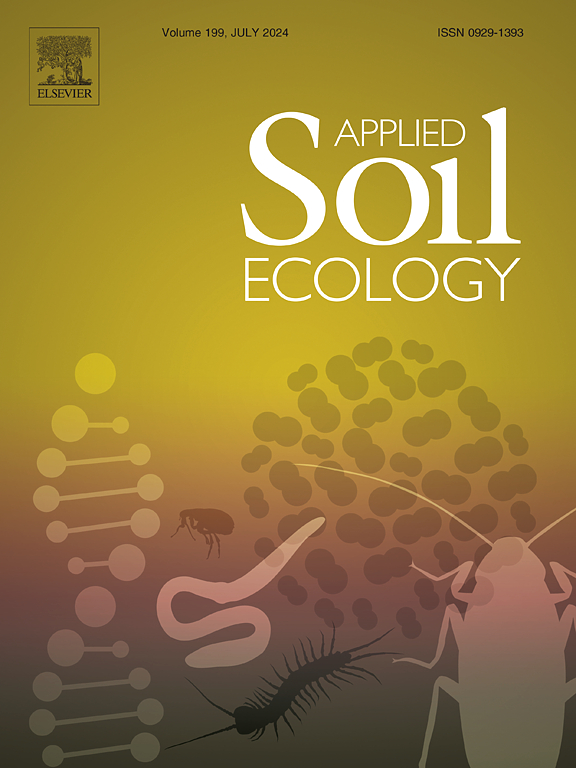Vegetation restoration promotes glomalin-related soil protein accumulation via mineral interactions in a Karst Region, southwest China
IF 4.8
2区 农林科学
Q1 SOIL SCIENCE
引用次数: 0
Abstract
Glomalin-related soil protein (GRSP), a key biomolecule regulating soil organic carbon (SOC) dynamics, plays a critical role in promoting SOC storage and stabilization. However, its response to vegetation restoration in high-mineral karst ecosystems remains poorly understood. This study investigated the effects of vegetation restoration (cropland, shrubland, and secondary forest) on GRSP accumulation and its contribution to SOC in a karst region of southwest China. Vegetation restoration significantly increased SOC and total GRSP contents, with secondary forest exhibiting 211.2 % higher SOC and 55.3 % higher total GRSP compared to cropland. Conversely, total GRSP's contribution to SOC decreased by 50.3 % in the secondary forest relative to cropland, likely due to the “dilution effect” from increased plant-derived carbon inputs. Random forest modeling showed that soil minerals (e.g., exchangeable Ca/Mg) and labile nitrogen were key factors in regulating total GRSP accumulation. This study highlights the pivotal role of soil minerals in mediating GRSP accumulation during vegetation restoration, providing new insights into microbial-controlled carbon sequestration mechanisms in karst ecosystems. These findings are crucial for optimizing ecological restoration strategies to enhance long-term soil carbon storage in mineral-rich environments.

喀斯特地区植被恢复通过矿物相互作用促进球囊素相关土壤蛋白积累
Glomalin-related soil protein (GRSP)是调控土壤有机碳(SOC)动态的关键生物分子,在促进土壤有机碳(SOC)储存和稳定中起着至关重要的作用。然而,其对高矿物质喀斯特生态系统植被恢复的响应仍知之甚少。研究了西南喀斯特地区植被恢复(农田、灌丛和次生林)对GRSP积累及其对有机碳的贡献。植被恢复显著提高了土壤有机碳含量和总GRSP含量,次生林土壤有机碳含量和总GRSP含量分别比农田高21.2%和55.3%。相反,相对于农田,次生林的总GRSP对有机碳的贡献减少了50.3%,这可能是由于植物源碳输入增加的“稀释效应”。随机森林模型表明,土壤矿物质(如交换性Ca/Mg)和活性氮是调节总GRSP积累的关键因素。该研究强调了土壤矿物质在植被恢复过程中介导GRSP积累中的关键作用,为岩溶生态系统微生物控制的固碳机制提供了新的认识。这些发现对于优化生态恢复策略以提高富矿物质环境下土壤长期碳储量具有重要意义。
本文章由计算机程序翻译,如有差异,请以英文原文为准。
求助全文
约1分钟内获得全文
求助全文
来源期刊

Applied Soil Ecology
农林科学-土壤科学
CiteScore
9.70
自引率
4.20%
发文量
363
审稿时长
5.3 months
期刊介绍:
Applied Soil Ecology addresses the role of soil organisms and their interactions in relation to: sustainability and productivity, nutrient cycling and other soil processes, the maintenance of soil functions, the impact of human activities on soil ecosystems and bio(techno)logical control of soil-inhabiting pests, diseases and weeds.
 求助内容:
求助内容: 应助结果提醒方式:
应助结果提醒方式:


